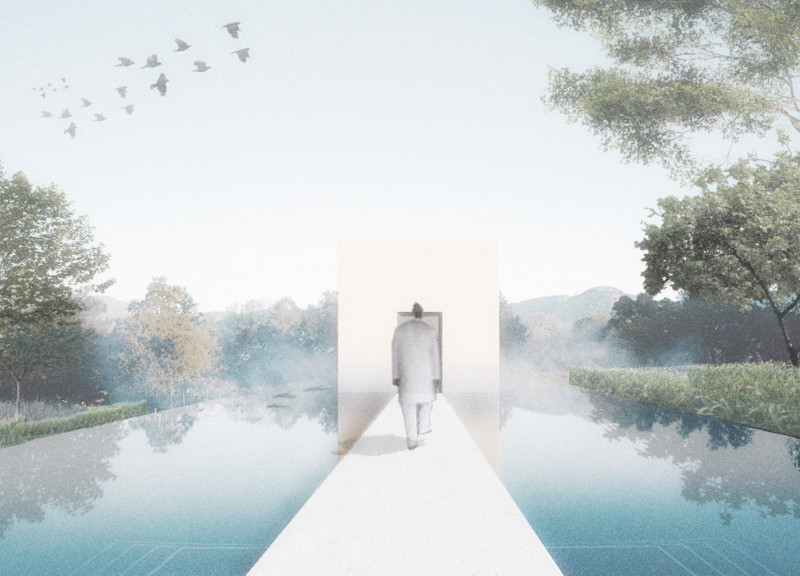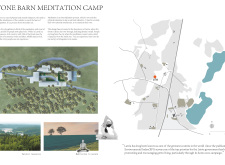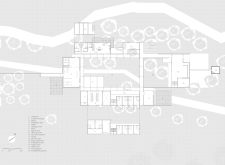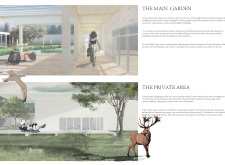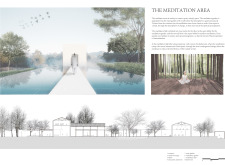5 key facts about this project
The primary function of the Stone Barn Meditation Camp is to provide a sanctuary for individuals seeking a respite from the demands of everyday life. It is structured to encourage various forms of meditation, whether in solitude or as part of a community experience. The thoughtful arrangement of spaces fosters both individual contemplation and group activities, responding to the diverse needs of its users.
Integral components of the design include accommodations that offer private retreat spaces, ensuring visitors have the opportunity to disengage and reflect in tranquility. The meditation hall serves as a central gathering place, facilitating group sessions and communal experiences that promote connection among participants. Carefully designed gardens enhance the aesthetic appeal and connect the built environment to the natural elements surrounding the camp. The meditation garden, positioned away from the primary facilities, provides a serene setting for personal reflection amid nature.
Unique design approaches are evident throughout the project, particularly in its emphasis on sustainability and integration with the existing landscape. The architecture utilizes materials that resonate with local construction traditions—wood, concrete, and glass—each carefully chosen to reflect both cultural significance and environmental responsibility. Wood serves not only as a structural element but also contributes warmth to the atmosphere, inviting users to feel at home. Concrete provides necessary stability while connecting the architectural form to the earth, and glass allows for an abundance of natural light, promoting a sense of openness and transparency.
The integration of indoor and outdoor spaces is another distinctive feature of the design, encouraging users to traverse seamlessly between nature and the built environment. This thoughtful planning enhances the therapeutic aspect of meditation by allowing users to engage with their surroundings actively, whether through gardening, walking trails, or quiet contemplation by the stream.
Moreover, the overall layout of the camp demonstrates a commitment to fostering community while preserving the individual experience. The careful zoning of spaces allows for both communal activities and private moments of reflection, emphasizing the understanding that meditation can be both a shared and solitary journey.
For those interested in exploring the architectural nuances of the Stone Barn Meditation Camp, further examination of its architectural plans, sections, and designs will provide deeper insights into this well-conceived project. By reviewing these elements, one can gain a better understanding of how architecture can serve as a medium for healing and connection, ultimately enriching the user experience.


